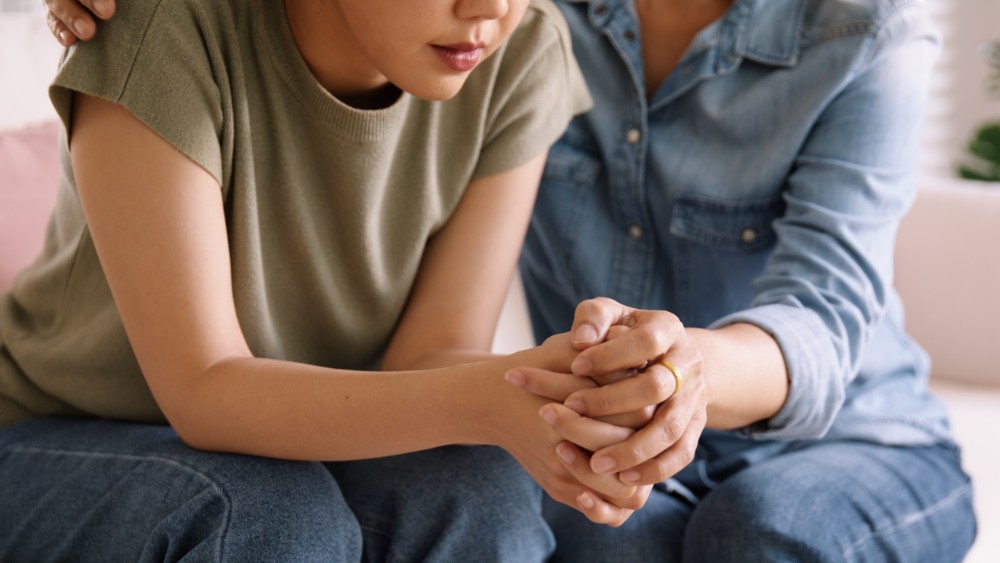
In a study supported by the National Institute on Aging, researchers found that people from many racial and ethnic groups in the United States reported experiencing less distress than White adults during the COVID-19 pandemic.

In a study supported by the National Institute on Aging, researchers found that people from many racial and ethnic groups in the United States reported experiencing less distress than White adults during the COVID-19 pandemic.
What you need to know
Studies have reported widespread increases in anxiety, depression, stress, and loneliness since the start of the COVID-19 pandemic, with nearly 8 in 10 Americans calling COVID-19 a significant source of stress. As a result, the American Psychological Association (APA) declared a national mental health crisis in the United States.
In a new study supported by the National Institute on Aging and the National Institute on Minority Health and Health Disparities, researchers examined how various measures of psychological distress — including symptoms of anxiety-depression, stress, and loneliness-isolation (the frequency with which people felt lonely or isolated) — compared among different racial and ethnic groups in the United States. The researchers found that White adults reported higher rates of anxiety and depressive symptoms than many other racial and ethnic groups did.
What did the researchers do?
Between December 2020 and February 2021, researchers conducted a nationally representative, cross-sectional online survey of 5,500 people: 1,000 White, 1,000 Black/African American, 1,000 Asian, 1,000 Latino (English- and Spanish-speaking), 500 American Indian/Alaska Native, 500 Native Hawaiian/Pacific Islander, and 500 multiracial adults.
Overall, 23.7% of the participants reported moderate/severe anxiety-depression symptoms, 34.3% reported moderate/severe stress, and 21.3% reported feeling lonely-isolated fairly/very often.
Compared with White adults, rates of moderate/severe anxiety-depression were significantly lower among Asian, Black, Latino, and Native Hawaiian/Pacific Islander adults. Similar trends were seen for stress and feeling lonely or isolated. However, American Indian/Alaska Native and multiracial adults reported feeling more distressed than White adults.
Why is this research important?
Other research has suggested that non-White racial and ethnic groups experienced increases in depression and anxiety during the COVID-19 pandemic, as well as limited access to mental health services. But this research suggests that people from some racial and ethnic groups have developed a degree of resilience to the hardships that the pandemic caused.
Future research can look to identify coping mechanisms among vulnerable populations and why people from some racial and ethnic groups reported less distress during the pandemic despite socioeconomic disparities and structural racism.
Where can I go to learn more?
Symptoms of Long COVID Differ for People of Different Racial and Ethnic Groups
-
In a study supported by the Researching COVID to Enhance Recovery (RECOVER) Initiative, researchers found that people from certain racial and ethnic groups are more likely than people from other groups to experience certain symptoms linked to Long COVID.
Racism, Violence, COVID-19, and Public Health
-
An NIH-sponsored project aims to illuminate connections between COVID-19, systemic racism, and community and police violence.
Understanding How Sex, Gender, and COVID-19 Intersect
-
Several NIH institutes and centers have funded research projects that examine how sex and gender have influenced health, safety, and well-being during the COVID-19 pandemic.
Sources
Nápoles, A. M., Stewart, A. L., Strassle, P. D., Alhomsi, A., Quintero, S., Ponce, S., Wilkerson, M., & Bonilla, J. (2023). Depression symptoms, perceived stress, and loneliness during the COVID-19 pandemic among diverse US racial-ethnic groups. Health Equity, 7(1), 364-376. http://doi.org/10.1089/heq.2022.0178

News and Stories
Read stories about the efforts underway to prevent, detect, and treat COVID-19 and its effects on our health.
 An official website of the United States government
An official website of the United States government

